Are you new to photography and a little unsure about the words and terminology used in this fascinating pastime? Keep reading to learn all about the different aspects of aperture in photography and how your understanding of it can unlock your creativity.
Aperture in photography is an adjustable opening in the camera lens that allows a quantity of light onto the sensor or film to produce an image or photograph. The opening can vary in diameter to allow more or less light in. The aperture is expressed as an f-stop on your camera like f/5.6 or f8.
Understanding this fundamental aspect of photography will give you a powerful tool to enhance your photographs and your knowledge.
Aperture Explained and Creative Ways to Use it
To create a photograph or image we need to let in a measured amount of light to a camera. This occurs through an opening in the lens. This opening is adjustable so that we can manage the amount of light entering the camera depending on the prevailing lighting conditions at the exact time of taking the photograph. This is the exposure of the sensor or film to light.
Camera Aperture Compared to an Eye

The human eye allows light in through an opening called the pupil. The size of the pupil is controlled by the iris. As the lighting conditions around you change or you move between lighter and darker situations, the iris in the eye automatically changes size depending on how much light is available.
So, to compare the eye to the camera; the pupil is the same as the aperture and the iris is equivalent to the mechanical blades that adjust to form the aperture inside the camera lens.
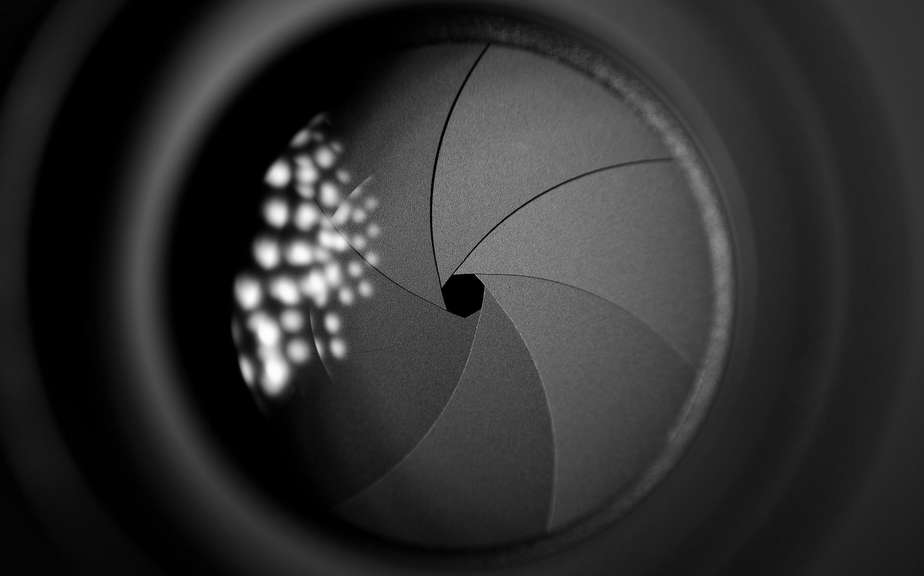
How the Aperture Works in a Camera
Before you take a photograph with your camera the aperture is fully open as large as it can be for that particular lens. This is so that you can see the scene that you wish to photograph clearly as you look through the viewfinder. When you press the shutter button the blades inside the lens that form the aperture start to close down, like an iris and then “stop” closing at the chosen opening size.
The aperture sizes on the camera are known as F-stops. The desired opening size for the aperture is chosen by the photographer or by the onboard computer in automatic mode to produce an image with the correct or desired exposure.
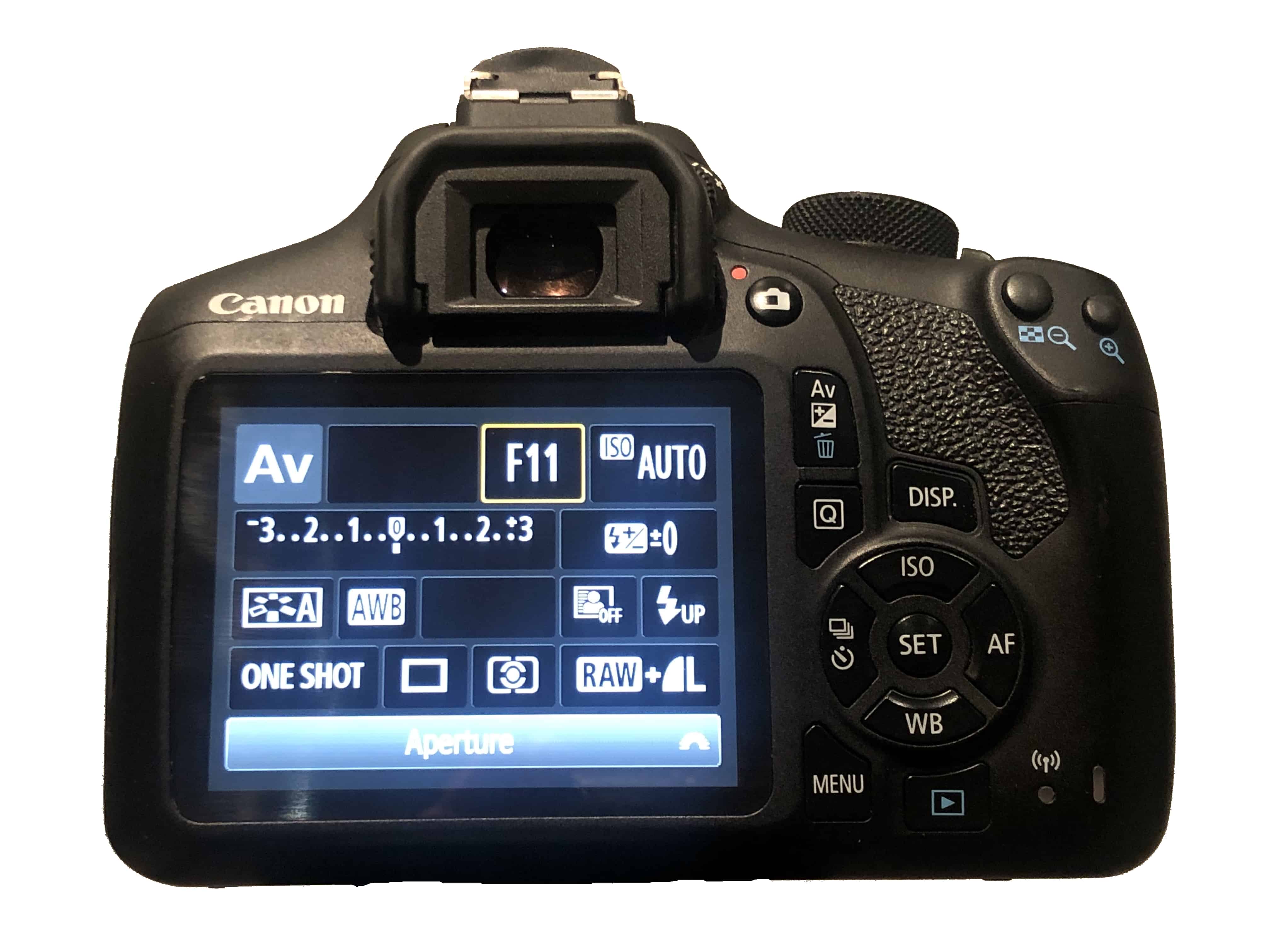
F-Stop Selection on a DSLR Menu Screen – Photo by Oscar J Harper
How Does Aperture Affect Exposure?
The aperture is one of the elements in photography that controls the brightness or exposure of an image. As the aperture changes size the amount of light that enters the camera changes. A very large opening allows more light in and a small opening allows less light in and this affects the exposure of the image.
For scenes that are naturally dark like the outdoors at night or indoors you might need to choose a large aperture to maximise the amount of light that reaches the sensor.
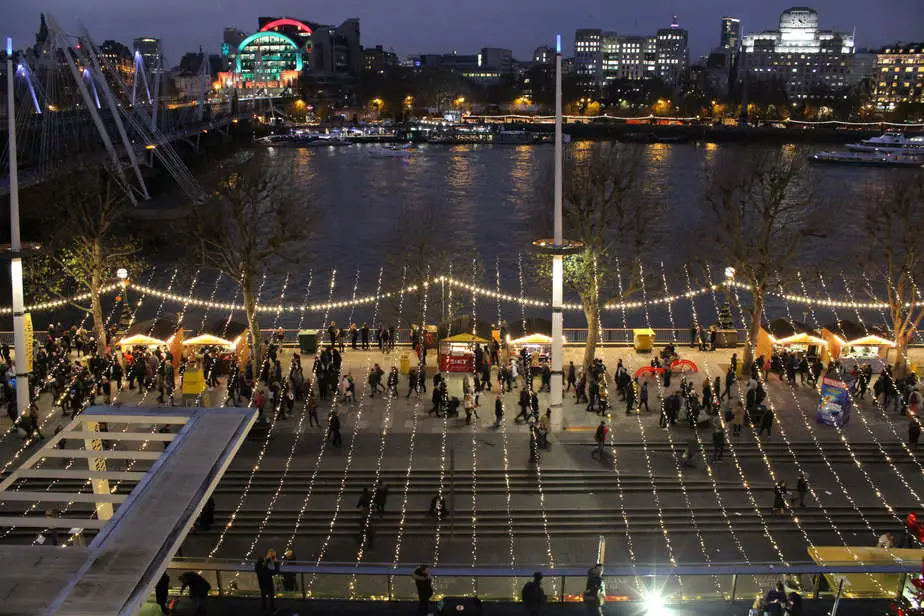
The image above was taken in the late evening on The South Bank of the Thames River from the balcony of the Royal Festival Hall, London. It was taken without a tripod so a large aperture was required in the low light to allow a suitable shutter speed to avoid noticeable camera shake. The large aperture meant that the whole depth of the scene would not be in sharp focus.
If you were shooting a very bright scene like a sunny beach or a floodlit stadium you would be able to select a smaller aperture to achieve the correct exposure.
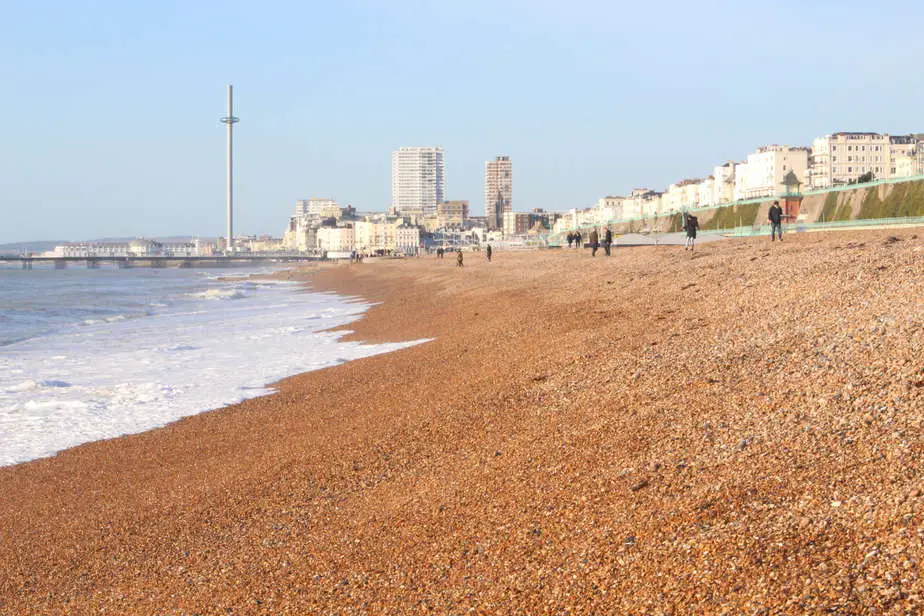
The bright beach scene above was captured in Brighton in December. It was a bright, hazy day but there was plenty of light to allow a small aperture of F16. The small aperture allowed the whole scene to be relatively sharp from foreground pebbles to the distant buildings of the town centre.
How Does Aperture Affect Depth of Field?
Another important aspect of photography that aperture controls is called Depth of Field. This refers to the amount of the image that appears to be sharp and in focus from front to back. It is the depth of the field of view measured forwards and backwards from the point of sharpest focus in the scene. Images can be described as having a shallow or deep depth of field.
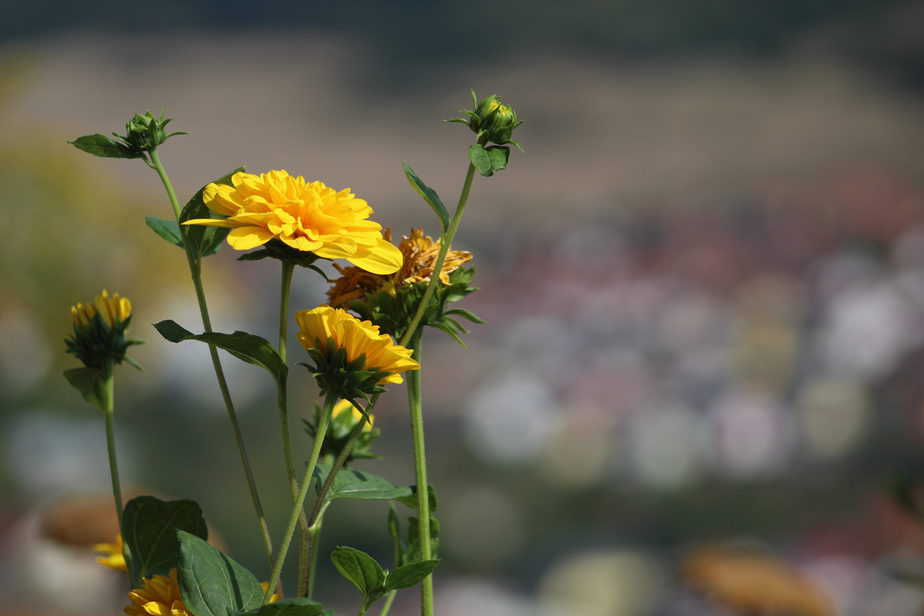
The photograph above was taken from a high hill near the town of Jena, Germany. The focus is concentrated on the foreground flowers which look pin-sharp against the very blurred background of a village in a sunny valley. The blur is a result of choosing a large aperture, F4.5.
A large aperture results in a shallow depth of field and a small aperture results in your image having a deep depth of field. The visual effect of a large aperture is to render most of the background and the foreground blurred. With a small aperture, most of the background and foreground will appear to be sharply in focus.
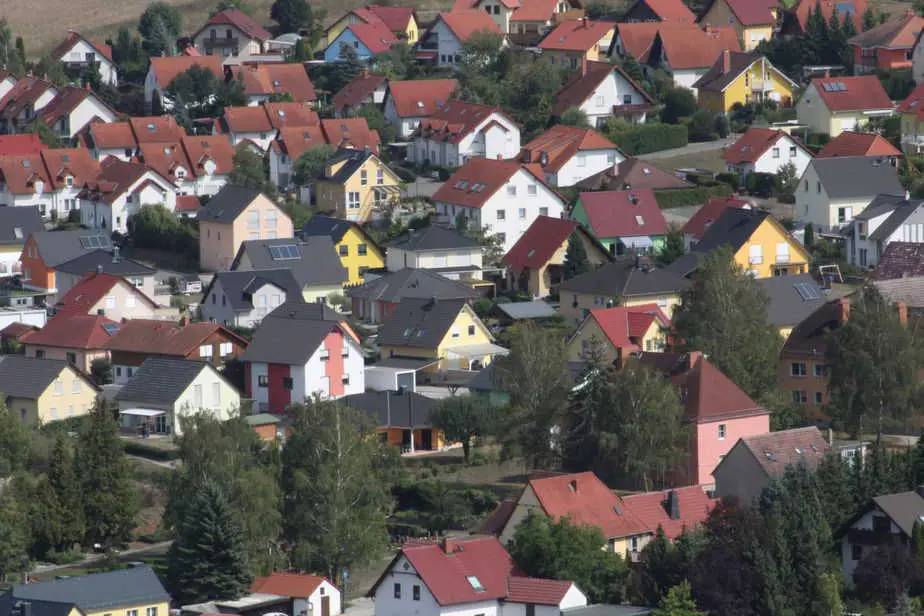
This photograph was taken in virtually the same spot as the flowers above (apart from taking a step to the side to remove the flowers from the frame). The difference is that we chose a very small aperture (F22), focused in the middle of the scene resulting in a very sharp image from foreground to background.
What is Aperture Priority Mode? (Av or A on the Program Dial)
Aperture priority is a simple program on your camera that allows you to consider only one aspect of exposure, the aperture. The brain of the camera then takes care of the other element; shutter speed. You select the aperture that will work best for your image. The camera then gives priority to your chosen aperture and sets the shutter speed accordingly.
Knowing what we know about exposure and depth of field we can pre-select an aperture that will give us the desired result (blurred background or pin-sharp depth) and allow the camera to set the shutter speed for a perfect exposure.
To select Aperture Priority on your camera choose the program on the dial called “A” or “Av” which means Aperture Value. You will then have full control of the aperture size and it will take priority over the shutter speed.
You still usually have the added benefit of having control over the ISO. This will allow you to boost the light amplification if your chosen aperture does not yield the desired result. So for example, when selecting a small aperture and the shutter speed, chosen by the camera is too slow, it produces an unwanted motion blur; you could increase the ISO which allows the camera to increase the shutter speed and stop the motion blur.
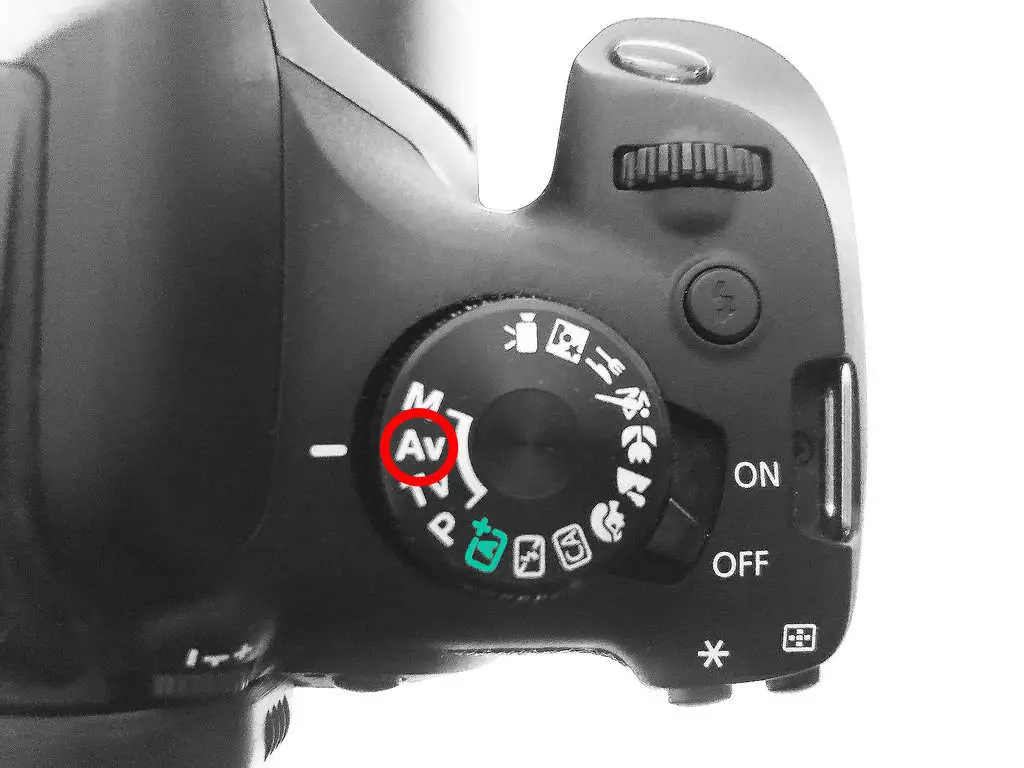
The Aperture Priority program (Av) is usually found on the manual/semi-manual side of the dial separate from the automatic and fixed creative programs.
How the Aperture is Measured, F-Stops
Each different fixed aperture size is known as an f-stop. They usually start with the largest opening size of the lens (f/1.4 for example) then get progressively smaller in the following order: f/2, f/2.8, f/4, f/5.6, f/8, f/11, f/16, f/22, f/32. Each time you switch up and down between these main numbers the amount of light entering the camera is doubled or halved.
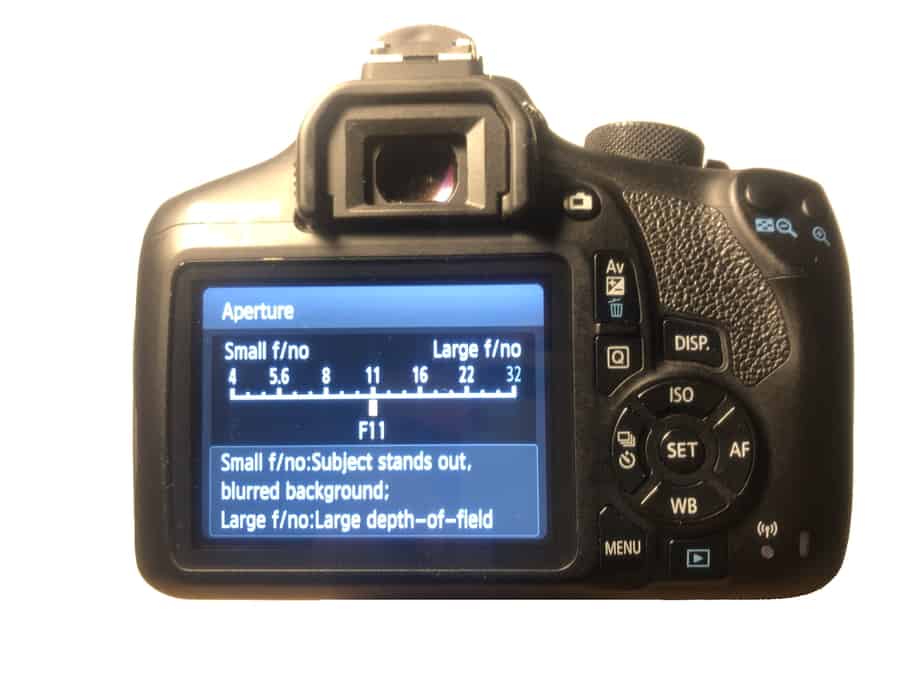
That represents “1 stop” of difference. Some modern DSLR cameras will have additional f-stops between these numbers to give you half stops or 1 third of a stop to increase the fine-tuning of the exposure.
Why Does a Large f-stop Number Mean a Smaller Opening?
You will notice that as the f-stop numbers get larger the aperture gets smaller. This can be confusing but if the think of the numbers as fractions it makes more sense as 1/16th is smaller than 1/4 for example. The “f” stands for “focal length”.
The fraction of focal length over the f-stop number will give you the diameter of the aperture. For example, if you have an 80mm lens set to an aperture of f/4 – 80/4 = 20. So, the opening would appear to be 20mm wide.
Another way to think of it is that when the aperture is very small, the area of the visible iris blades is very large so the larger number (like f/22) may help you to visualize the large area of the iris with a tiny hole in it.
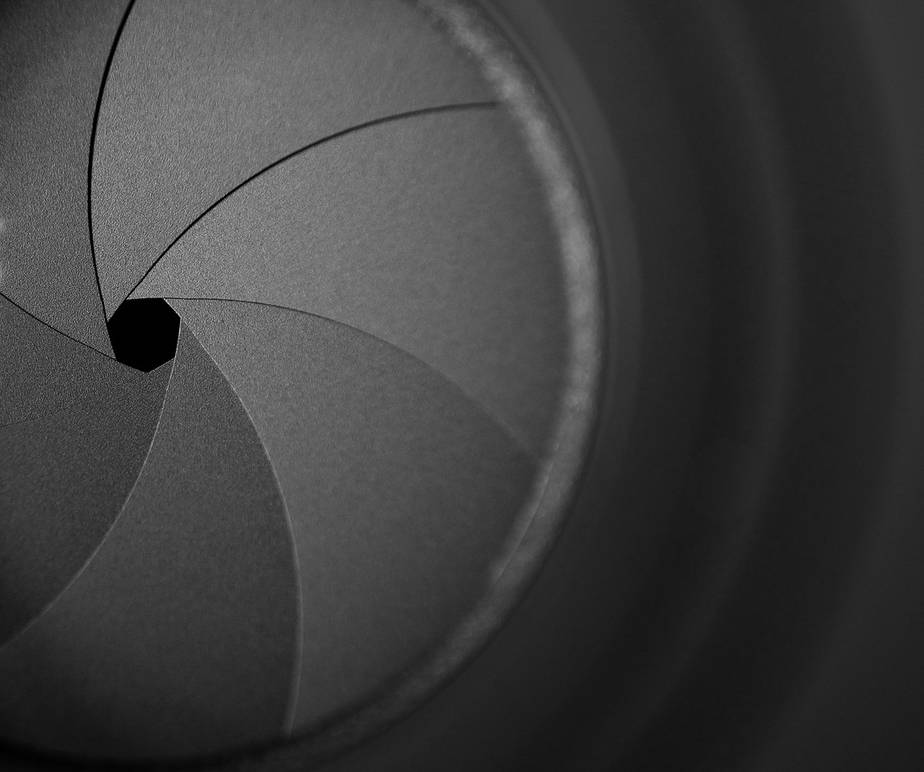
How to Use Aperture Creatively in Your Photography
Your newfound knowledge of aperture will help you to decide which is the best size opening to use for the most satisfying result for any particular photograph. We now know that a very small aperture will give us a very deep depth of field where almost everything is in sharp focus, from the near foreground to the distant horizon.
This would be an excellent choice for a detailed townscape image. Everything from the very near details immediately in front of you to the distant buildings and street scene would be in focus.
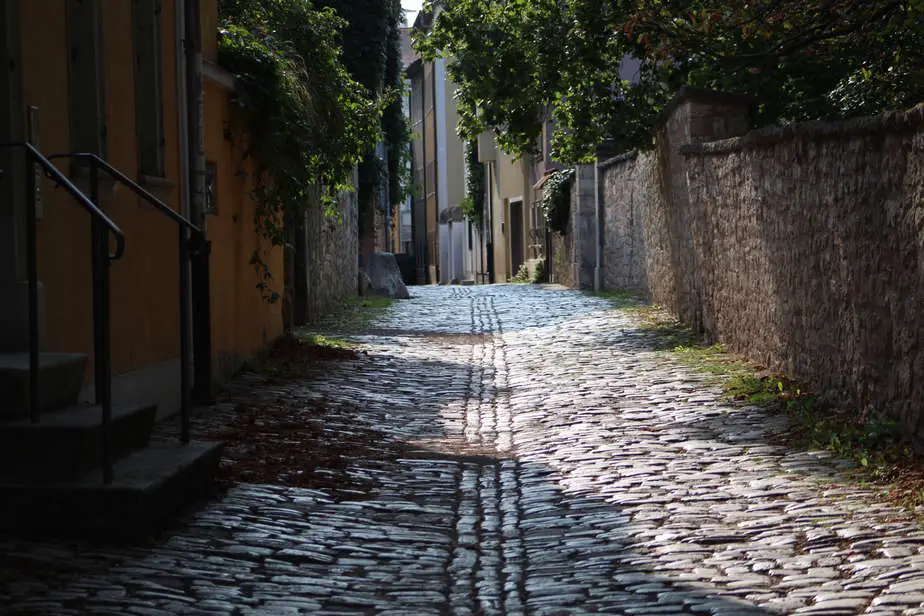
Here we see a back alley in a small village in Germany. There is no main subject to focus on but the whole scene is interesting so we should choose a small aperture to create a deep depth-of-field so that everything, from the foreground cobbles to the far end of the alley is in focus.
Let’s think about the best use of a very wide-open aperture. We know that a wide aperture gives us a very shallow depth of field. If we want to take a picture of a subject and make it stand out sharply from the background, we could use a large aperture as it would make the background very blurred.
This would make the subject that we focussed on seem to be even sharper than it actually is and focus the viewers’ attention on the sharp subject. The degree of the background blur also depends on how far away it is from the focussed subject. Distant backgrounds would be very blurred but those that were close to the subject would be less blurred.
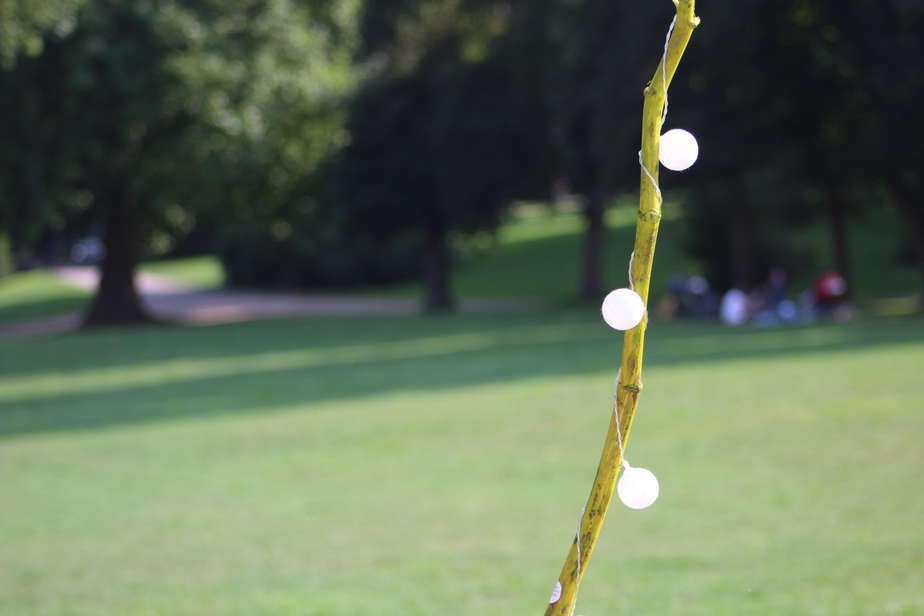
Here, the pole with the lights is lifted out of the background of trees by using a large aperture. You have to make sure that you directly focus on the object that you require to be sharp. It also helps that the background is far away and is darker than the main subject.
The shallow depth of field is also a great way to eliminate fussy or untidy backgrounds that would distract from the main subject of the image. The element that you focus on in the scene would be pulled out of the confusing mess of the background and elevate the photograph from mediocre to exceptional; it’s a magical effect.
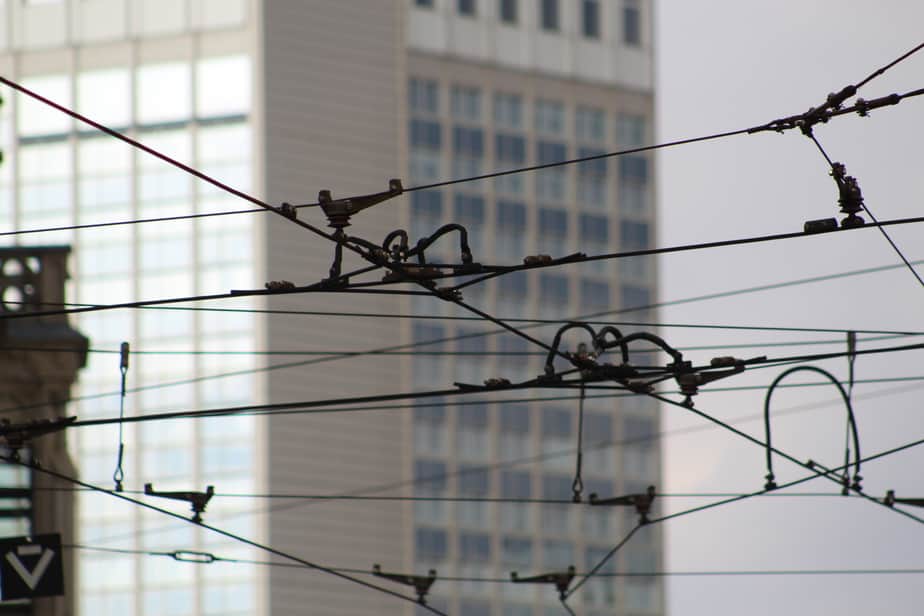
Photo by Oscar J Harper
This abstracted image of the tram cables would have been far less successful if the background buildings were in sharp focus. Now we can read the elements separately and understand the confusing web of overhead cables in the heart of the town centre. It also helps here that the cables are a dark silhouette against the brighter background.
There are many apertures between the maximum and minimum that your lens can produce. You can play with these in a creative way to perfect your final image. You can adjust the degree of the background blur or bokeh by adjusting the f-stop size until it looks perfect for a particular image.
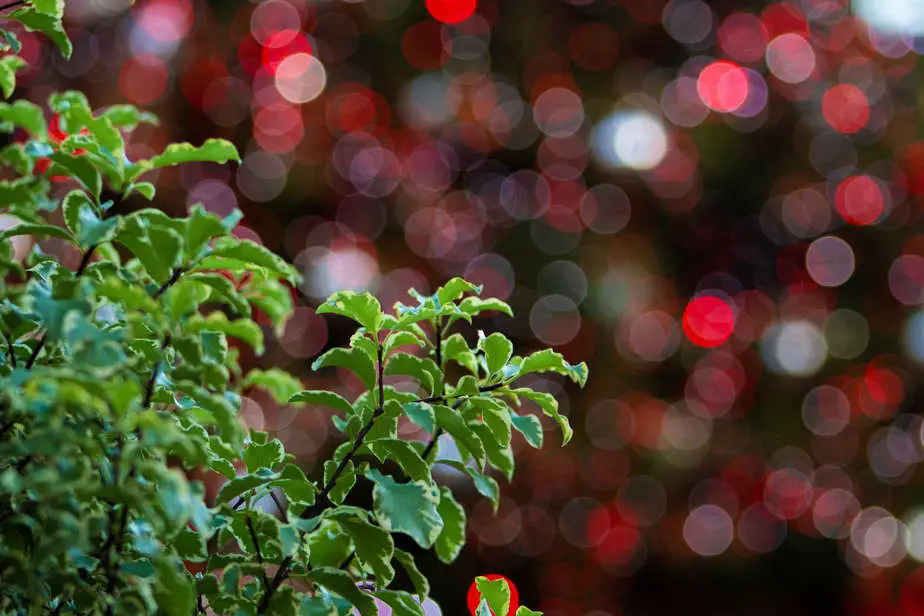
Photo by Oscar J Harper
These are Christmas tree lights at Covent Garden, London. There were hundreds of red and white Christmas lights on a massive tree in the background of this green bush. The blurred, overlapping mass of light bokeh made a perfect backdrop for the sharp plant in the foreground. It also helps that red and green are complementary colours.
The aperture is one of the elements that control the exposure of the final image. If you are using your camera in Manual mode, you could deliberately manipulate the f-stops to over or underexpose an image for a particular creative effect. You could open up the aperture to brighten up a dark scene or close it down to get more detail in a very bright scene.
A large aperture will allow more light into the camera and therefore it would allow you to use a faster shutter speed to get the correct exposure. This could then be utilised to freeze the action on a very fast-moving scene like a fountain or motorsports.

The wide aperture of this shot allowed for a very fast shutter speed of 1/500th of a second. This actually froze the rapidly flowing water into individual beads of water that would be invisible to the human eye. The large aperture also naturally created a blurred background to enhance the apparent sharpness of the frozen water beads further.
A small aperture would let less light in so a slower shutter speed would be required to achieve the correct exposure. You could exploit this setting in a creative way by exploring the effect of motion blur in your images. The small aperture coupled with a slower shutter speed would blur the moving water of a fountain whilst keeping the whole of the rest of the scene in sharp focus. Moving people would also become ghosted as well.
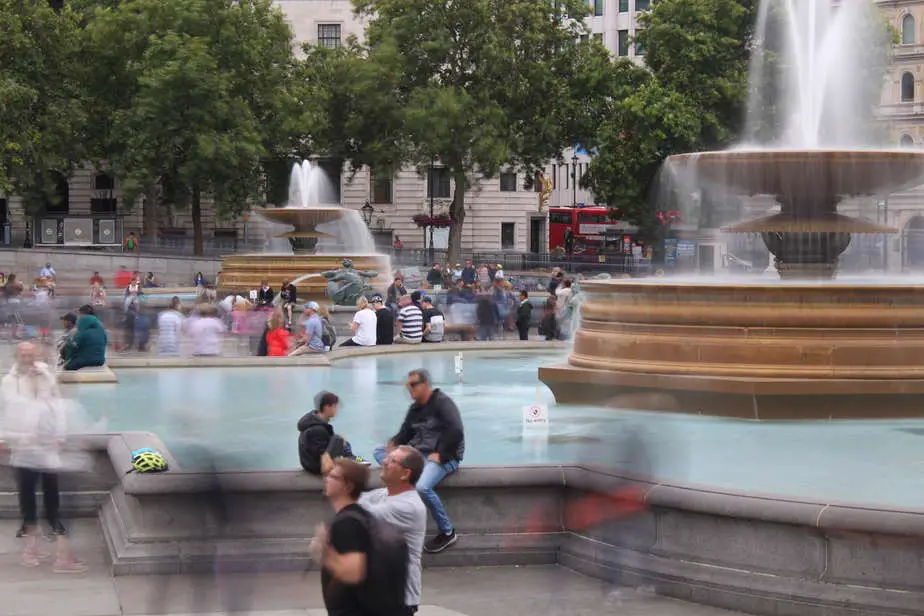
Photo by Oscar J Harper
The fountains of Trafalgar Square, London. These were captured with a very small aperture that allowed a very slow shutter speed of about 2.5 seconds. The rippling water of the pond appears to be flat and the flowing fountains appear like a soft, hazy mist. All of the non-moving elements like the stone and buildings are all in sharp focus due to the small aperture required for the very slow shutter speed.
If you find that the scene is still too bright to achieve a very slow shutter speed you may need to introduce some ND (Neutral Density) filters to the camera lens. These darken the image without affecting the colours and allow for slower shutter speeds.
Related Questions
What is Shutter Speed in Photography and How to Use it?
One of the fundamental elements of photography is shutter speed. Knowledge of how this works and how it affects exposure will give you a great insight into how you can best manipulate it to produce more creative photographs. Learn more about shutter speed here!
What is ISO in Photography and How to Use it?
ISO is one of the three fundamental elements of exposure in photography. If you would like to learn more about ISO click here!
Why do Buildings Lean in Photos?
Looking up at tall buildings requires a large depth of field to keep the whole structure in sharp focus and therefore a good understanding of Aperture. There is the other problem with tall buildings, that is that they appear to lean over. For a complete guide on why buildings lean and how to correct that, see our illustrated article here in Photography Skool.
How do You Take Grainy Photos?
Understanding Exposure is a key factor in producing deliberately grainy photos. This seems to go against the general aspirations of photography but it can add some gritty quality to the right subject. To find out more about this unusual approach click here to read our article in Photography Skool.

